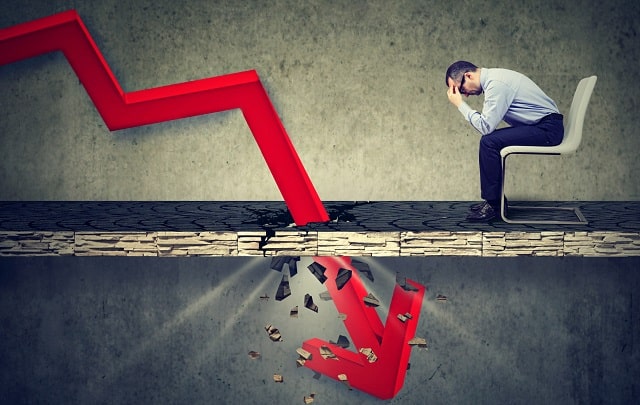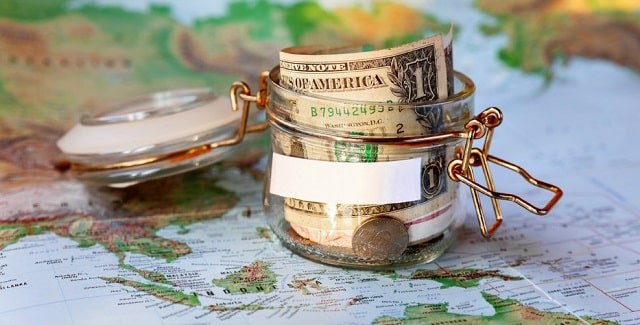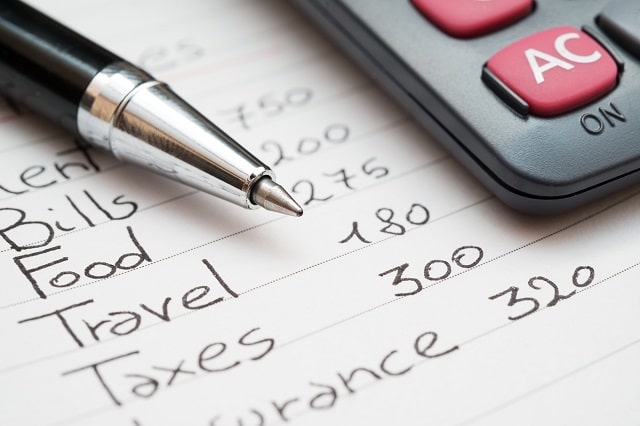Are your bills higher than ever right now in the new normal? Times are tough in this tumultuous economy as costs are skyrocketing for homeowners and landlords alike. Winter is coming (or summer... whichever is more expensive for you) and that means increased energy use to control temperatures for homeowners and property owners. And now with tariffs on foreign oil and gas, prices are expected to rise even further for gasoline and electricity. Everyone has to tighten their belt and pinch pennies to improve their frugal finances in 2025.
But some bills are unavoidable and show up in your mail on or your credit and debit card statements each month, cutting into your frugal finances. We all have mandatory monthly costs like utilities cutting into your budget significantly. Your energy bills are probably eating away at your savings and investable income each month with many people feeling powerless to reduce or eliminate them. And even with the extreme increase in energy prices, some states and regions are still having power outages going into 2025! Power grids continue shutting down, and who knows what will happen to energy costs with the upcoming presidential election.
Exponential Energy Bill Increases
Energy prices are unfortunately only going one way, and that is way up with almost no end in sight! This is especially true with rising inflation and steep increases in oil and gas prices around the world. A lot of traditional fuel companies have been facing growth restrictions and some countries are being boycotted for their energy, driving up prices further for consumers around the world. Even states and nations proud of their renewable energy initiatives have reverted at least temporarily to natural gas, coal, and nuclear power just to support their power grids so people don't freeze to death. Gas, oil, and electricity are a lot more expensive than they used to be for homeowners and property owners, despite ESG standards being much higher nationwide and worldwide for appliances.
There is not a lot of price reduction relief in sight despite some stimulus checks in a few areas of the world. Most government safety nets for energy relief and financial protection have ended or will be ending soon, leaving consumers to fend for themselves.
So, how do you make the most out of your energy, fuel, and utilities to help cut costs each month? Frugal Finance has you covered on smart and simple energy saving methods. Here are 17 top tips to reduce energy use and save money daily along with lowering HVAC costs.
Heating And Cooling Cost Cutting
Heating and cooling are the main culprits responsible for expensive utility bills. This is also the best place to explore cost-reduction measures for your household or workplace. Ensure your furnace or boiler is efficient with boiler coverage. It would be wise to check here for available plans to cut costs and improve efficiency with boilers if your home or property has an older one.
Now read the additional 20 top ways to save on your bills and energy usage below.
20 Top Energy Saving Tips To Lower Your Utility Bills
1. Inspect Seals On Doors, Windows, And Appliances
Heat and cold care escape through the cracks in a matter of milliseconds. To avoid or minimize this, ensure your freezer and fridge are appropriately sealed to trap cold air inside. This also applies to windows and doors. Any seal malfunction could contribute to leaks and end up draining your heat, air conditioning, and/or wallet.
2. Repair Leaky Ducts
Gaps and leaks within your ductwork can lead to air loss and inflate your electricity bills. Sealing and insulating your air conditioning ducts, ventilation, and heating and cooling systems may go a long way towards lowering your bills. Caulking and seal repairs (or even duct tape) are frugal methods that can help to preserve heat or air conditioning every day to help your utility bill savings add up. You can also use duct tape to close gaps since that is what it is named after, and even purchase some at the local Dollar Tree (even though products now cost around $1.25 instead of $1, plus taxes).
3. Set Your Thermostat
When you head to bed each night, lower your thermostat's temperature to between 10 and 15 degrees. This also applies when you are away from home for work or travels. By doing this for eight to twenty hours every day, you can significantly lower the energy you use to heat and cool your house all year round.
You can be able to automate this process using a programmable thermostat or smart home device like NEST, Ecobee, Amazon Smart Thermostat, or Honeywell brand. Now you can adjust heat or AC levels from a convenient app on your smartphone!
4. Adjust The Temperature Settings Of Your Fridge And Freezer
To cut energy costs, make sure you set the temperature of your fridge to 38 degrees and that of your freezer between 0 and 5 degrees. By doing this, you will keep your food fresh. Your fridge and freezer won't have to use much energy to maintain temperature. To make the most of your money, monitoring your expenditure is crucial. Observe trends and spot opportunities you can exploit. This will give you a clear idea of what you need to do to save some cash. Smart appliances and smart phones are excellent at tracking energy use and temperatures.
Water usage is also a crucial consideration for reducing energy and utility use. According to the Energy Department, hot water is the second-placed item driving high utility bills in most homes. Whether in the laundry room or the shower, reducing your hot water usage can significantly reduce your electricity costs in 2025.
5. Take Shorter Showers
You may save up to five gallons of water if you cut your shower time by two minutes. You will save money, reduce energy expenditure, lower water use, and free up valuable time! The phrase "time is money" applies to showering for sure. Set a timer if you need to or pretend that you are paying by the minute like in some public showers, because in reality you actually are!
6. Install A New Showerhead
A water-efficient showerhead can reduce the amount of hot water you use and save up to 2,700 gallons per year. Get a shower head with the WaterSense label, certifying that it meets the Environmental Protection Agency's efficiency criteria. Or a high-pressure showerhead will allow you to take a quicker shower and therefore use less hot water in that way.
7. Avoid Washing Clothes In Hot Water
Washing clothes with hot water is energy-intensive and only needed for certain garments, bulk items, or stains. If possible, use warm or cold water to do your laundry to avoid the extra heat costs. Sometimes the cold water actually works better anyways!
8. Repair Leaky Taps
No one wants to hear that dripping sound every night. All of those drips add up day after day and night after night. Fix your faucets to save gallons of water 24/7. A quick visit from a plumber or watching a YouTube DIY video should do the trick.
9. Adjust Your Water Heater's Temperature
Most water heaters are typically set at 140 degrees. If you lower this default setting to 120 degrees instead, you may save water heating costs by around 10% annually. Leaving town for the weekend? Make sure you turn that water heater to its lowest setting to save more energy. This is especially helpful if you have a small household and don't have to worry about running out of hot water for daily family member showers and baths. You also have to consider dishwashers and washing machines.
10. Buy Energy-Efficient Appliances
If you are looking for a new water heater, washing machine, or dishwasher, consider purchasing an energy-efficient model to save energy usage for longer. For example, a dishwasher with the Energy Star label should use 3.5 gallons of water or less every cycle. Some older dishwasher models may use more than 10 gallons per cycle. For appliances that run nearly all day or for weeks like the fridge, water heater, TV, and HVAC system, consider buying energy-efficient models.
The latest energy efficient appliances can more than pay for themselves within a couple of years. Many of them turn off or go on eco-mode when they are unused for a period of time, saving more electricity and money.
11. Inquire About Discounted Rates From Utility Providers
During certain times of the day, you may enjoy cheaper rates for you to do energy-intensive chores, like laundry. Electronics and lighting account for roughly 11% or more of a typical residential utility bill. And if you are a good negotiator, there is always the chance that you could strike a discounted deal with your utility providers.
12. Change Your Lightbulbs
You can save up to $75 per year by replacing bulbs in the five frequently-used light fixtures with LED bulbs or compact fluorescents (CFL) that have the Energy Star label. The LED bulb option is much better these days if you have the choice and they will pay for themselves in no time. They also don't get as hot so it can actually make them safer in terms of potential burns or fires.
LED bulbs are so much more efficient than incandescent bulbs that the United States and some other nations are essentially restricting or banning their use. There are much fewer incandescent bulbs for sale now and a lot less in terms of legacy bulb products being produced. This helps to save consumers money, improve energy independence, and enhance overall safety.
13. Set Up Dimmer Switches
Dimmers allow you to determine a room's brightness at a sliding scale customized level. This lets you set the mood that suits your needs and saves energy in the process. Make sure to use LED light bulbs that are compatible with dimmer switches to get the most energy reduction and avoid flickering lights at certain dimming levels. Dimmer switches may cost slightly more money initially but overall they will more than pay for themselves on your electricity bills.
14. Use Smart Power Strips
For devices that don't truly power off while connected to electricity, plug them into a power strip. This mainly applies to devices with remote controls. High quality power strips also provide additional safety with surge protector capacity which could prevent overloads or fires in certain cases.
15. Conduct An Energy Audit
Utility providers will often perform energy audits to determine ways to cut down on your energy usage. There are many other methods to reduce power use that you may not have thought about but an expert could identify quickly. Often times energy audits are free due to government energy efficiency programs. Your local and federal government wants you to be more efficient with your energy use and has an incentive to help you.
16. Install Solar Panels Or Wind Turbines On Your Property
Want to generate your electricity for free? Interested in selling your excess electricity to the local power company? Then renewable energy generation is your ticket! Solar energy panels or wind turbines / windmills will generate your power and help you save countless costs while going green. You may even qualify for government tax credits to save even more money while cutting back on energy! And the power company in your area is legally required to buy your excess electricity, so you will end up getting a credit or check each month from them.
17. Go Off The Grid
Want to take energy savings to the extreme and live off the land? If you want to save even more money, consider going off the grid as a homesteader for full self-sufficiency. Buy a piece of land in a remote area for a bargain price and work it yourself while setting up wind, solar, and minimal fossil fuel sources to generate energy. It can be a risky move, but also rewarding in many ways.
18. Get A Hybrid, Electric, Or Great Gas Mileage Vehicle
While this tip isn't technically for saving energy with your home, you can still save plenty of fuel by switching to a more efficient vehicle. Some efficient gas-powered vehicles get even better mileage than hybrids, like compact sedans or Smart cars.
19. Purchase Electric Tools
Using electric instead of gas-powered tools can help reduce energy costs as well. With a lawn mower, leaf blower, hedge trimmer, weed whacker, or snowblower you can eliminate gas use while lowering noise levels. Your neighbors will thank you and so will your gas bills!
20. Recharge Your Batteries
Batteries cost a lot more money these days than they used to, and still power many aspects of your home and its devices. When you recharge batteries, you only spend a fraction of the cost compared to buying new ones. You also keep a lot of toxic waste out of landfills!
It is time to go green so you can save some green and maintain your frugal finances! Save energy and money more in 2025!
Energy Efficiency Excellence
When it comes to living frugally and sustainably, energy efficiency is essential to conserve your cash. Keep these top tips in mind to help lower utility bills and reduce your energy use daily.









